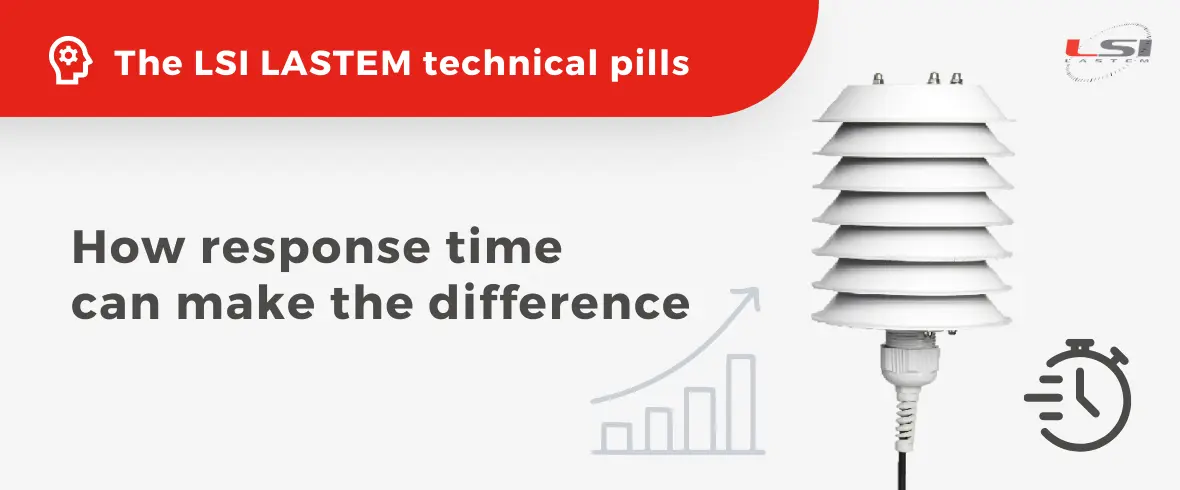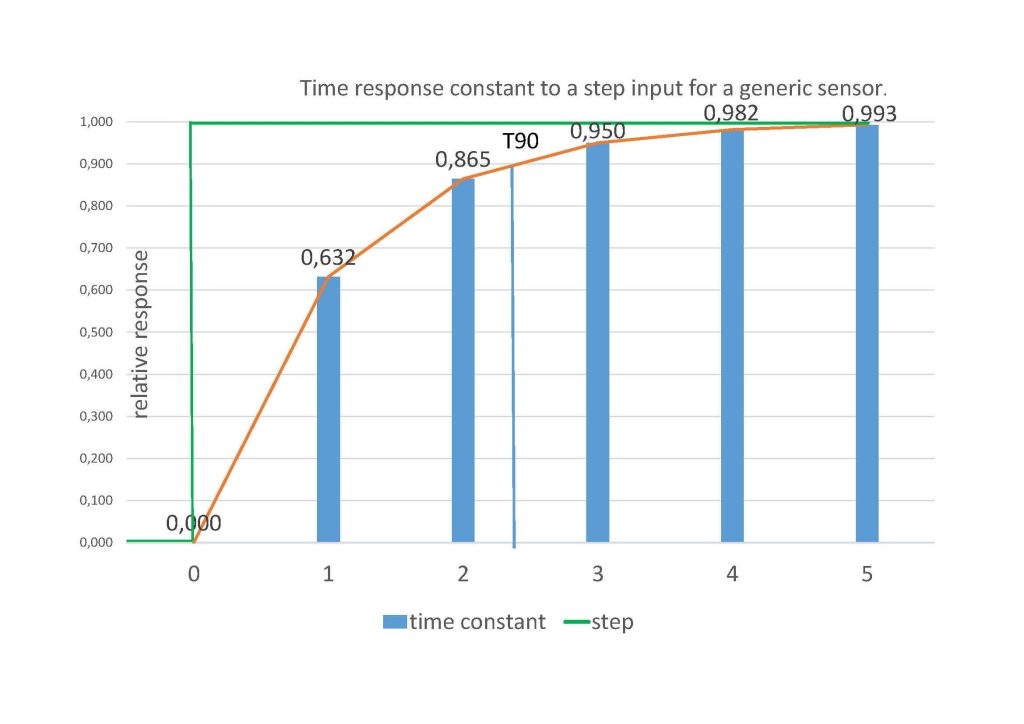The response time of the measuring instruments is defined by the time constant τ, which indicates 63,2% of the time it takes the instrument to measure the new condition. After about 4-5 time constants, the instrument will be able to measure more or less 99% of the variation. The response to this rapid variation is called “step response” and is usually exponential as in the figure.
The LSI LASTEM technical pills: How response time can make the difference

One of the critical parameters for evaluating the performance of measuring instruments is the response time, i.e. the time taken by the instrument to provide a stable and reliable reading of the physical quantity, after a variation of the same has been applied.
When choosing a measuring instrument, it is good to keep this concept in mind and select a sensor that has response times suitable for your needs, especially for those sensors of physical quantities with slower achievement of the stability condition.
Response time
An instrument that measures a generic magnitude, such as temperature, pressure, wind speed, etc., can be in two conditions:
- In a stability regime, which occurs when environmental conditions are substantially constant and do not undergo significant variations;
- In a dynamic regime, which occurs when environmental conditions change suddenly.
In a stability regime, the instruments are able to make precise measurements of the magnitude for which they were designed.
In a dynamic regime, however, the magnitude varies rapidly from one value to another and the instrument takes time to reach the new condition and make a new measurement.
The ideal measuring instrument should be able to detect the new condition instantly. In reality, however, the response only happens within a few seconds or a few minutes. This behavior is due to the fact that the instruments have a certain inertia in responding to changes, leading to a delay in measurement.
Response speed is one of the most important characteristics of measuring instruments and the shorter the reaction time, the higher the quality of the instrument.
Time constant

The mathematical formula describing the response to rapid variation has the following form:
Ui=Uf(1−e-t/τ)
Ui: instant response i;
Uf: final response;
e: Nepero number;
τ: time constant [s];
t: time [s] elapsed until instant i.
The response time of measuring instruments is often defined and declared in the technical documentation through the T90 parameter, i.e. the response time required for the instrument to reach 90% of the new measurement, which corresponds approximately to 2,3 time constants.
Conclusions
The response time varies greatly depending on the type of sensor and the physical quantity measured.
Some sensors have a fast behavior and respond in a few seconds (even in fractions of a second), among them, UV-A and UV-B radiation meters, lux meters and barometers. Most sensors, on the other hand, respond in tens of seconds or even several minutes.
These sensors include thermometers, relative humidity meters, pyranometers, net radiometers, anemometers, wind vane direction meters, and gas sensors.
When using sensors that require longer times to reach the stability condition, it is very important to take into account the declared response time, in order to obtain a correct, stable and meaningful measurement.
